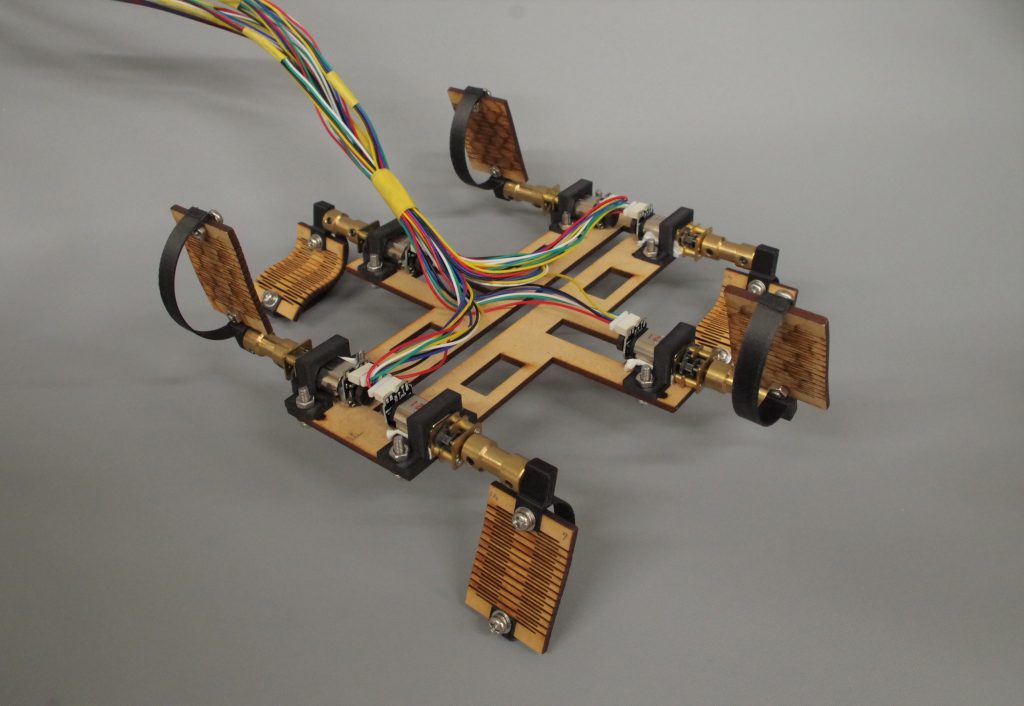
This research proves the shape and stiffness design method of flexible continuum legs so that the legs store the force from the ground as elastic energy and convert it into propulsive force. First, we considered a suitable shape for kicking the ground horizontally and then utilized simulation and optimization algorithms to find the stiffness that would store the most elastic energy. The legs were fabricated to achieve the required shape and stiffness, and experiments on the prototype demonstrated that the legs improved speed by up to 1.9 times compared to the exiting C-shaped legs.
Mr. Atsushi Kaneko has been conducting this research in our laboratory, which was presented at the following conference:
Conversion of Elastic Energy Stored in the Legs of a Hexapod Robot into Propulsive Force, Atusushi Kaneko, Masahiro Shimizu, and Takuya Umedachi, The 11th International Conference on Biomimetics and Biohybrid Systems (Living Machines 2022), July 20, 2022
Multilegged Robot Utilizing Horizontal Elastic Forces Generated in Legs for Propulsion, Atsushi KANEKO, Satoshi IOBE, Takuya UMEDACHI, Robomech 2020, G11-2, 2020 (in Japanese).
